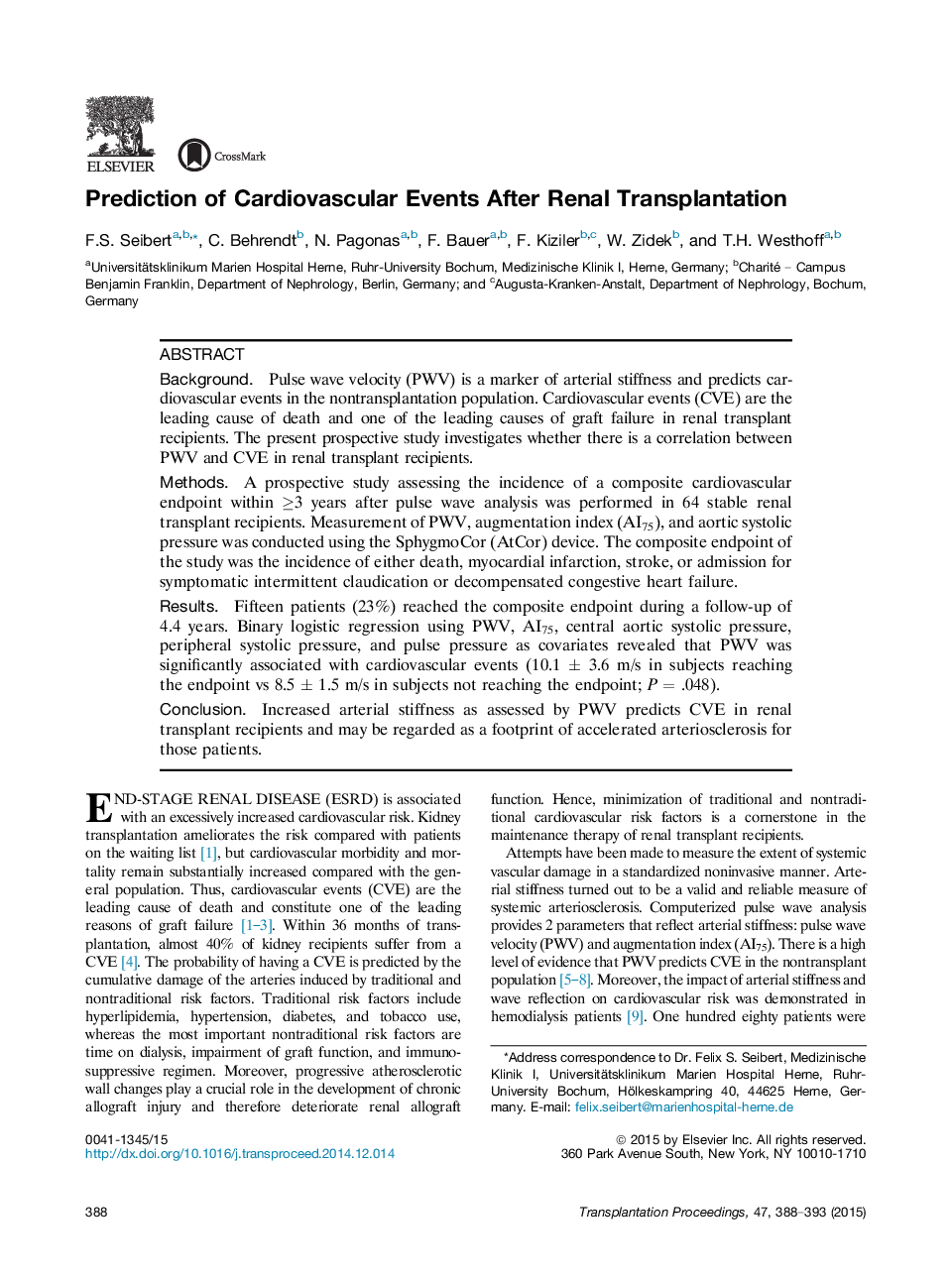| Article ID | Journal | Published Year | Pages | File Type |
|---|---|---|---|---|
| 4257615 | Transplantation Proceedings | 2015 | 6 Pages |
•This was a prospective study including 64 renal transplant recipients, in which 15 suffered from a cardiovascular event and 49 did not.•Assessment was made of pulse wave velocity, augmentation index, central aortic pressure, peripheral blood pressure, and pulse pressure.•Binary logistic regression revealed a significant correlation between pulse wave velocity and cardiovascular events among renal transplant recipients.
BackgroundPulse wave velocity (PWV) is a marker of arterial stiffness and predicts cardiovascular events in the nontransplantation population. Cardiovascular events (CVE) are the leading cause of death and one of the leading causes of graft failure in renal transplant recipients. The present prospective study investigates whether there is a correlation between PWV and CVE in renal transplant recipients.MethodsA prospective study assessing the incidence of a composite cardiovascular endpoint within ≥3 years after pulse wave analysis was performed in 64 stable renal transplant recipients. Measurement of PWV, augmentation index (AI75), and aortic systolic pressure was conducted using the SphygmoCor (AtCor) device. The composite endpoint of the study was the incidence of either death, myocardial infarction, stroke, or admission for symptomatic intermittent claudication or decompensated congestive heart failure.ResultsFifteen patients (23%) reached the composite endpoint during a follow-up of 4.4 years. Binary logistic regression using PWV, AI75, central aortic systolic pressure, peripheral systolic pressure, and pulse pressure as covariates revealed that PWV was significantly associated with cardiovascular events (10.1 ± 3.6 m/s in subjects reaching the endpoint vs 8.5 ± 1.5 m/s in subjects not reaching the endpoint; P = .048).ConclusionIncreased arterial stiffness as assessed by PWV predicts CVE in renal transplant recipients and may be regarded as a footprint of accelerated arteriosclerosis for those patients.
